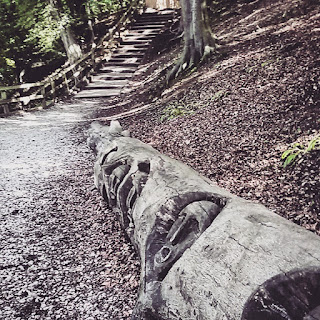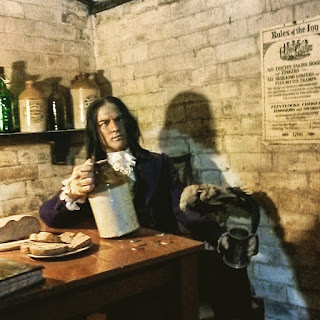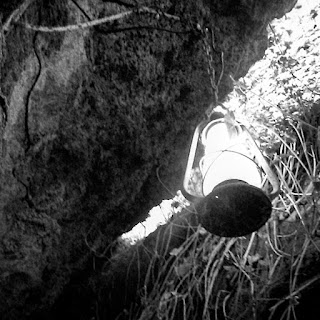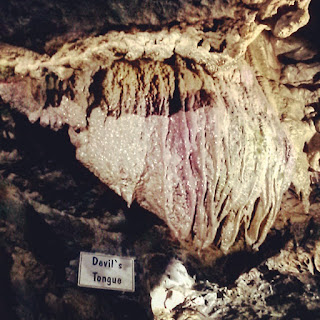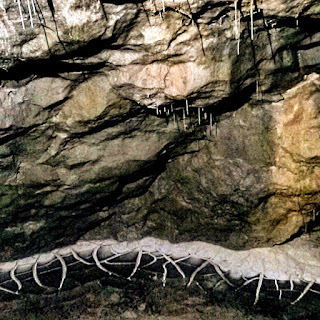Sunday, 26 July 2015
The Pineapple and fruit salad, Airth, Falkirk, Scotland
The Pineapple, or the Dunmore Pineapple, is one of Scotland's most remarkable buildings. Standing a mile north of the village ofAirth, it was built by the 4th Earl of Dunmore, John Murray, in 1761 as a birthday present for his wife Charlotte, in the form of a pavilion from which to view the walled gardens of Dunmore Park, the family estate. Why did the Earl top off his pavilion with a pineapple? Presumably to show that he could.
Pineapples had been discovered in the Caribbean by Christopher Columbus in 1493, and over the following centuries had become rare and highly prized delicacies in Europe. Symbols of power, wealth and hospitality, they had increasingly come to be used by architects to decorate gateways, door lintels and other detailed features on their buildings.
Dunmore's Pineapple sees this trend taken to its eccentrically logical conclusion: and it may well be the only case of someone forming the entire roof of a building in the shape of a pineapple. Perhaps surprisingly, the architect who designed the Pineapple is uncertain, though some have attributed it to the Scottish architect Sir William Chambers, who is known to have produced a number of distinctive buildings in London's Kew Gardens.
The top of the Pineapple stands 45ft above the level of the walled garden to its south. On its the north side, outwith the walled garden, it stands 37ft above the surrounding landscape. A line of four large stone vases top the wall, two on either side of the Pineapple. These conceal chimneys that originally topped off a heating system within the garden walls. This was intended to promote the growth of exotic specimens (doubtless including pineapples) in the greenhouses that originally lined the inside of the north wall of the garden, either side of the ground-level portico.
By the 1970s the walled gardens had become overgrown and the buildings adjacent to the Pineapple were in danger of collapse. In 1974 the Countess of Perth gifted the buildings, gardens and policies to the National Trust for Scotland. Working with the Landmark Trust they restored the Pineapple to its former glory, and it can now be rented out as a holiday home from the Landmark Trust. Access for residents is from the north side, while those viewing the Pineapple do so from the garden to the south after parking in the small car park outside the garden.
While the Pineapple has been restored, other elements of Dunmore Park have fared less well. In the 1822 a new mansion also called Dunmore Park (or Dunmore Park House to avoid confusion) was completed here for George, 5th Earl of Dunmore. This was partly demolished in the early 1900s, and the remains suffered from fire in the 1980s. Also in Dunmore Park are the remains of Elphinstone Tower, which date back to 1504.
A church built close to the tower in the 1820s has disappeared altogether. The remains of the house and tower are not easily accessible to visitors to the park, and it's best to think of the Pineapple as a structure to be viewed in its own right. A woodland walk is signposted which takes visitors partly through some of the park's now very dense woodland and partly through open fields to the south of the Pineapple.
Perhaps the grandest element of Dunmore Park that is still complete is the parsonage, standing back from the A905 (and glimpsed from it) on the east side of the park. You are left wondering how grand the grand house must have been if this was its parsonage. Also surviving is the estate model village, Dunmore, on the banks of the River Forth to the north east of the park.
Meanwhile, proposals to restore Dunmore Park House have also suggested the building of 54 houses in the park. Aspects of these plans have been opposed by many, including the National Trust for Scotland. Our advice would be that, the Pineapple is a very odd building in an even odder location, and you should visit it soon in case the character of the surrounding landscape is dramatically changed by housing development.
http://www.undiscoveredscotland.co.uk/airth/thepineapple/
Elphinstone Tower, Dunmore Tower or Airth Tower, Airth
Elphinstone Tower, also known as Dunmore Tower or Airth Tower, is a ruined tower house on the Dunmore Estate in central Scotland. It is located 1.5 kilometres (0.93 mi) north-west of Airth and 9 kilometres (5.6 mi) east of Stirling in the Falkirk council area. The 16th-century ruin is protected as acategory C(S) listed building.[1]
History[edit]
The tower dates to the early 16th century, when it was built by Sir John Elphinstone as the seat of thebarony of Elphinstone.[2] The Elphinstone Estate was purchased for £16,000 by John Murray, son of the 3rd Earl of Dunmore, in 1754.[3] Two years later he inherited the earldom, and renamed the estate Dunmore after his title. Lord Dunmore built the famous Dunmore Pineapple elsewhere on the estate in 1761. The tower was extended at some point, although there is little evidence that it was occupied.[3] In the 1820s the 5th Earl commissioned the building of Dunmore Park as the principal residence on the estate. The additions to the tower were demolished to allow construction of St Andrew's Episcopal Church, a private chapel completed around 1850.[4] The tower was subsequently restored and the ground floor remodelled as a family burial vault.[2]
The Murray family left Dunmore in 1911, and the tower has since decayed. St Andrew's Church was demolished in the early 1960s,[4] and the north-west angle of the tower collapsed after a storm around 1968.[2] The tower stands 9 by 7.4 metres (30 by 24 ft), and the walls are 17 metres (56 ft) high to the parapet.[2]
https://en.wikipedia.org/wiki/Elphinstone_Tower,_Falkirk
Monday, 20 July 2015
Subscribe to:
Comments (Atom)





















